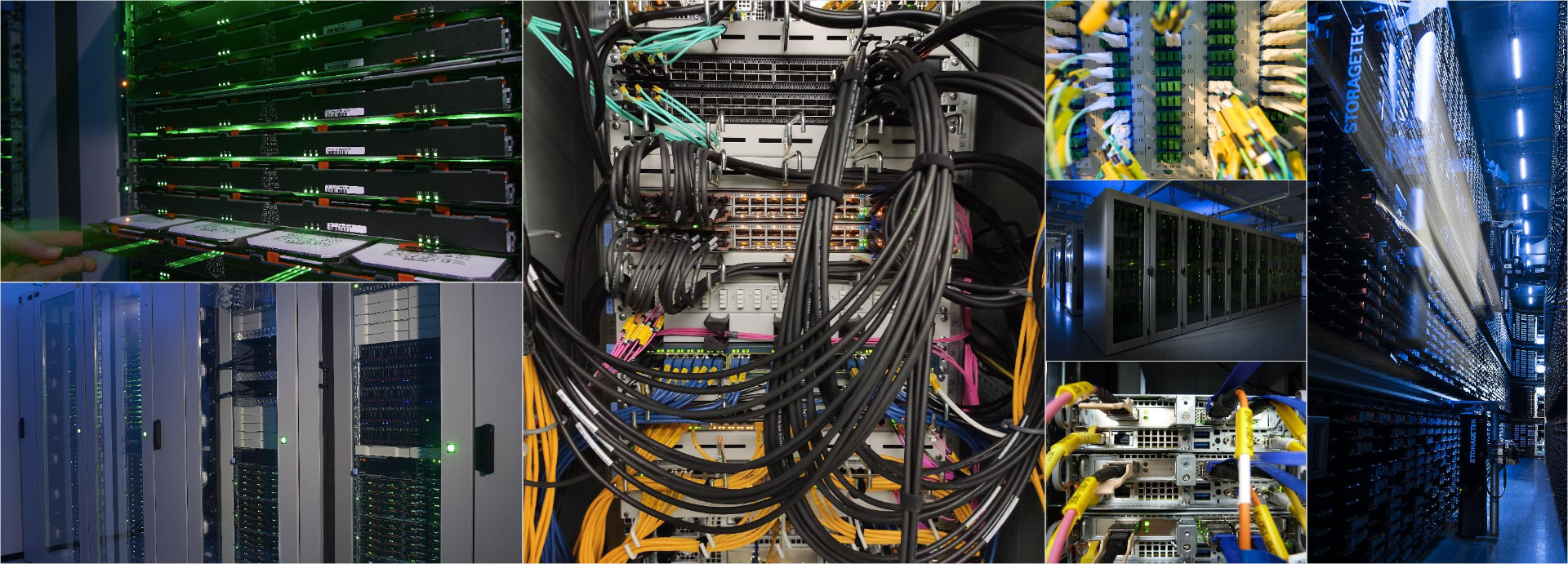GridKa Overview
As a Tier 1 centre of the Worldwide LHC Computing Grid (WLCG), GridKa is responsible for processing, preparing and archiving the raw data from the LHC and future HL-LHC experiments. Other WLCG centers, in particular Tier 2 centers, rely on GridKa as a data source and data archive. GridKa is one of only four Tier-1 centres in the world that supports all four LHC experiments. In addition to the LHC experiments, GridKa serves other particle physics and astroparticle physics experiments with German participation, e.g. the COMPASS experiment at CERN, the Pierre Auger Observatory in Argentina and IceCube at the South Pole. GridKa is one of the raw data centres for the Belle II experiment at KEK in Japan. Since 2023 GridKa supports the dark matter search experiment DARWIN.
GridKa provides a large fraction of the WLCG Tier-1 resources committed worldwide: 15% of the computing power (CPUs), 15% of the online storage (disk), and 13% of the tape storage capacity. For all experiments, GridKa provides about 600 kHS06 of CPU power, 68 PB of usable disk space, and about 143 PB of usable tape storage space (2024). With its excellent wide area network connections of 2x100 Gb/s to CERN and 2x100 Gb/s to the German research network backbone, GridKa plays an important role for the current LHC Run-3 and Belle II data taking.
As one of the largest and most powerful particle and astroparticle physics computing centres in the world, GridKa is an indispensable LK-II large-scale research facility that enables the successful participation of German physicists in international particle physics and astroparticle physics collaborations.
GridKa was established in 2001/2002 at the request of the German HEP community as the Regional Distributed Computing Centre Germany and has been providing computing and storage resources since October 2002.
GridKa is hosted and operated by the Scientific Computing Center (SCC), the scientific computing centre of KIT.
As a user facility aimed primarily at users outside the Helmholtz Association, it belongs to the category of Helmholtz-LK II activities.






 202
202